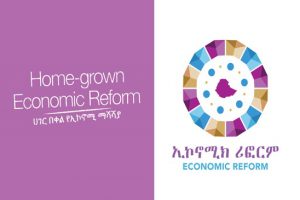It is funny, but whenever the topic of Ethiopian agriculture is
raised, what pops into my mind is a retired Ethiopian Adventist Church leader
.His name is Bekele Heye People, who knew him well, are heard saying he was at
home with the man in the palace as he was with the man on the street. Of
course, he had been, as it were, wining and dining with several African heads
of states of his time. Bekele spent much of his prime time roving around
African countries in pursuit of success in fulfilling his duties as a church
leader at continental level.
Few years before his death, I had a chance to interview him .Among the several issue that he talked about, the thing that stuck in my memory is what he said with regards to the status of Ethiopian agriculture as compared to other neighboring countries.
“I have traveled far and wide in Africa. I have never seen a farmer plowing with oxen in any African country other than Ethiopia,’’ he said with sadness written all over his face, which is usually beaming with warm smile.
Twenty five years after that engaging interview, I still wonder if that is really-really true! If so why? Why is Ethiopian agriculture backward even by African standard? Why is it is still languishing in the medieval era technology?
The more enigmatic question is how on earth this country remained crippled for so long to be food aid recipient and grain importer ,while it is lavishly endowed with a bounty of land and water resources with a scale and diversity rivaled by few nations in the world?
Various administrations with varied political outlooks vowing to transform the agricultural sector have come and gone without making meaningful impact failing to live up to their promises. Among the major issues that could be mentioned here is lack of focus on governments’ side in devising workable policy and strategy and more importantly meticulously implementing them. The availability of efficient, competent and committed leadership and expertise in the sector is a variable to be factored into the equation.
Majority of Ethiopians eke out a living from agriculture. The major hard currency earning products of the country are sourced from agriculture. So, if Ethiopia is thinking of sustainably revitalizing its economy, then transforming its agriculture is of paramount importance.
In contrast to its predecessors, the Abiy administration appears to be looking at the issues of the country’s agriculture from the right perspective. This would certainly lead it to choosing the best strategy option serving as a silver bullet for multifaceted problems surrounding the agricultural sector.
The incumbent government appears to be appreciative of the fact that boosting agricultural productivity has a huge bearing on stabilizing the country’s economy .In a remark he gave at a the gathering held last week of leaders and experts of the agricultural sector, Premier Abiy stated the government has been undertaking numerous activities to bolster the agriculture sector’s role as the engine of the economy. He also mentioned his government’s strategy which prioritizes increasing productivity of small holding farmers and expanding large-scale commercial farms.
Small holding farms which are the major players in the sector are in need of a holistic transformation in to modern system off farming through adoption of appropriate technology from abroad and indigenous innovation. The government has already enacted several initiatives in ensuring progress in this regard integrating the efforts of stakeholders in the sector including research and learning institutions.
A case in point here is the walking tractor, adopted to the rugged Ethiopian landscape, has been recently announced to the public by the Ministry of Innovation and Technology. The tractor, with affordable price close to that of two oxen, and almost entirely designed and assembled by Ethiopians except for its motor, is expected to start roaming in village farms within a year time.
In addition to technological transfor mation small holder farmers need support that would extricate them from being totally dependent on the rain, which renders them vulnerable to recurrent droughts and thus reliant on Productive Safety Net Program, PSNP. Cognizant of this situation, the Abiy administration has already planned to spend some 20 billion Birr for construction of small scale irrigation schemes.
Timely delivery of agricultural inputs at an affordable price, easy access to micro finance services, streamlining market outlets, as well as sensitizing farmers with modern agricultural skills are among the additional key areas the government chose to eye on.
If the leaders and experts of the agricultural sector are truly patriotic and determined enough to live up to their commitments, then the site and sounds of highland farmers plowing through their hillsides with walking tractors to cover it with the waving sea of wheat harvest won’t be in a distant future.
If Premier Abiy stays focused on the green revolution he sparked last week, surely the seemingly endless grey dusty desert plains of Afar, Somali and Oromia states would soon be turned into thick jungles of citrous fruits that would be packed into juice bottles to find their ways to the hungry markets of the Middle East and Europe. And then, Bekele Haye would look down from heaven with his usual warm smile on his face and shout “Hallelujah!’’
The Ethiopian Herald, June 2/2019
BY GETACHEW MINAS






